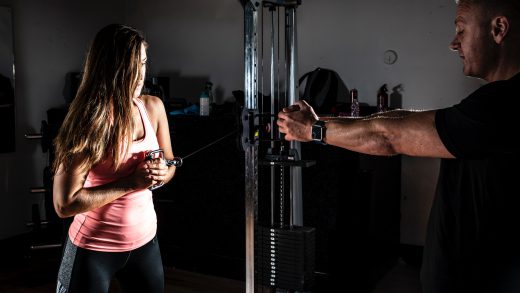In my last blog Is Crossfit dangerous? I looked at the research on what it says on the injury rate in Crossfit. Although the injury rate is not very high in crossfit, I think we should always look for ways to minimize the risk for injury in any sport. So, I dove back into the research and looked to see if there are topics where we can improve. Added with some personal beliefs, here are my recommendations for the Crossfit Affiliates.
Research

Last week we looked at how many new injuries developed over a certain period of time in Crossfit. We also saw that the most common injuries were overuse injuries, mainly in the shoulder, lower back and knee. However, does this tell us somebody about who is at risk? Can we screen certain things before we begin with Crossfit? Unfortunately those topics are not yet researched in Crossfit.
Duration of Crossfit
Mehrab M. et al. [1] helped us with the injury incidence among Crossfit participants in the Netherlands. They also saw that Crossfitters that were participating 6 months or less in Crossfit were significantly at greater risk of injury. This is in line with a study done in the United States of America by Feito Y et al. [2]. Although they found an increased risk in the first year of Crossfit participation.
Amount of training
The study also claims to show an increase in injury risk in those who participate less than 3 times a week in a Crossfit class to those who do more classes. This might feel a little odd, but we’ll come back to this later. A study done by Minghelli B and Vincente P (2019)[3] on Portugese Crossfit participants found similar results. Less than 3 Crossfit classes show an increased injury risk. They also found that those who participate in competitions have less risk to those who do not. Although in a retrospective study done by Montalvo et al.[4] claim the opposite. However, this was a retrospective study, which is less reliable than a prospective study. Non the less, we have to be careful to draw conclusions when there is conflicting evidence.
What can we do better?
Like the study of Mehrab M. et al. [1] I think the increased risk of injury in starting participants is due the lack of experience in movement, strength and mobility. Although in General Crossfit gyms have beginner classes, where these movements are gradually taught and learned. However, as with everything we are highly variable as a species. Everybody learns on a different pace, has a different starting point in strength, mobility. We all know people who are picking up movements very easily and we know “the clumsy” people who never seem to get it.

Beginners
Although the beginner programs are great, I think there should be more focus in the regular classes on those who are new. Research suggest that it might be not enough, as we see more injuries in the beginner population. Here the trainer/ coach’s eye comes into place. In my humble opinion technique always comes before performance and although I think many of you agree, I think that when we look in different affiliates that people are too fast with stuff they are not ready for. And I get it. The charm of Crossfit is getting that PR, or getting each other through a tough workout and scrape yourself of the floor.
Train more
On the other hand research shows that the population that attend to 3 classes or more a week, are less prone to injury than those who attend less than three. I feel this might be due the fact that Crossfit classes have a high variability in movement and exercise variables like strength, endurance etc. When we participate one time in strength class and one in endurance, we only train both once in a week, which might be not sufficient. Also research from rugby by Gabbet T. et al. [5] shows that we might train not enough to ask high performance from ourselves. Though we have to be careful to translate this to crossfit.
Competitors vs non competitors
As a trainer it is cool to have contributed to a accomplishment of one of your top athletes who are top ranked nationally or even internationally. However, these athletes know what they are doing most of the time and the people that come in fresh need the attention more. So give them some love.
I would like to stress out that this is not a blog written to make feel affiliate owners they are not doing a good job. On the contrary! This blog is written for some topics that might need some extra attention.
References
- Mehrab M, de Vos RJ, Kraan Ga, Mathijssen N M.C.: Injury Incidence and Patterns Among Dutch CrossFit Athletes. Orth. J. Sports Med. 2017. dec. 5 (12).
- America by Feito Y, Burrows EK and Tabb Lp.: A 4-Year Analysis of the Incidence of Injuries Among CrossFit-Trained Participants. Orthoped J Sports Med. 2018. Oct 24
- Minghelli B. and Vincente P.: Musculoskeletal injuries in Portuguese CrossFit practitioners. J Sports Med Phys Fitness 2019 Jul;59(7):1213-1220
- Montalvo Ma, Shaefer H, Rodriquez B, penere K and Meyer GD: Retrospective Injury Epidemiology and Risk Factors for Injury in CrossFit. J sports Sci Med. 2017 Mar. 1;16(1):53-59.
- Gabbet TJ. The training—injury prevention paradox: should athletes be training smarter and harder? BMJ volume 50 issue 5



